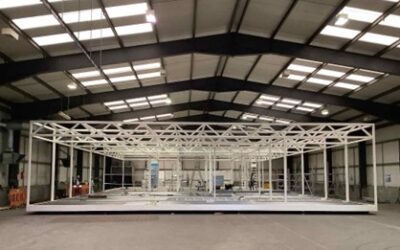Leveraging our extensive knowledge and experience in the cleanroom sector, Ardmac have the right technical solutions to respond to the increasing demands of the EV industry.
In line with the rapid increase in the use of electric vehicles worldwide, the global lithium-ion battery market size is expected to expand at a CAGR of 18.1% from 2022 and reach $182 billion by 2030, according to a recent report by Grand View Research, Inc. Key to this target being achieved will be the availability of suitable giga-battery manufacturing facilities.
Given the reactive nature of lithium, specialised closely controlled dry room environments are critical to the manufacturing process for high-quality lithium-ion batteries. This requires the application of cleanroom and humidity control technologies coupled with the expertise of our teams to deliver ultra-low RH clean facilities. Ardmac have developed a number of design solutions, tailored to suit your project’s specific requirements in relation to your dry cleanroom performance. With 45 years of experience in the successful delivery of close controlled environments for the advanced technology sector, Ardmac and our specialist partners are ideally positioned to deliver your next EVBF manufacturing facility.
Dry cleanrooms are hermetically sealed rooms, along with mini-environments that contain and maintain ultra-low humidity levels while also controlling airborne particle concentrations and static discharges. Specific requirements for such facilities can vary but would typically be ISO Class 6 – 8 cleanroom, with Relative Humidity level of <1% or a Dew Point of -50° Celsius. Regardless of whether it is a small-scale R&D facility or a large scale giga-plant the same design principles will be applied.
The design solution required to achieve ideal dry cleanroom conditions are made up of 2 critical elements and matching the architectural envelope with the HVAC system; they must be indivisible. The architectural envelope is responsible for meeting the requirements in relation to the provision of a hermetically sealed room. The HVAC system is responsible for ensuring that the required temperature, humidity levels and airborne particle concentrations are maintained. While the design principles for dry cleanrooms remain consistent, the project specific design solutions can vary depending on a number of key design variables which include the following:
- Room occupancy levels
- Required temperature and relatively humidity levels & control bandwidths
- Physical room dimensions
- Sensible internal heat loads
- Room exhaust rates
- Process workflows and equipment layouts
- Material and people flows and airlock barriers i.e. MALs and PALs
For further information, visit: https://www.ardmac.com/ev-battery-facilities/



